Polyphenylene Oxide (PPO) plastic is a versatile thermoplastic with exceptional mechanical, electrical, and thermal properties, used widely across various industries. Precision and optimal performance in injection molding require proper thermal behavior management, which is crucial for engineers and manufacturers working with this material. Softening temperature, a significant determinant of thermal profile alongside the rest of thermal behavior, stands out as it harshly impacts processing conditions, product durability, material quality, and overall benchmarks. In the following blog post, I want to present the challenge posed by softening temperatures in injection molding, along with attempts at practical solutions to achieve better results. After reading further, I hope to alter the perception of how PO’s versatile properties can be utilized to tackle diverse industrial challenges.
What is the Softening Temperature of PPO?
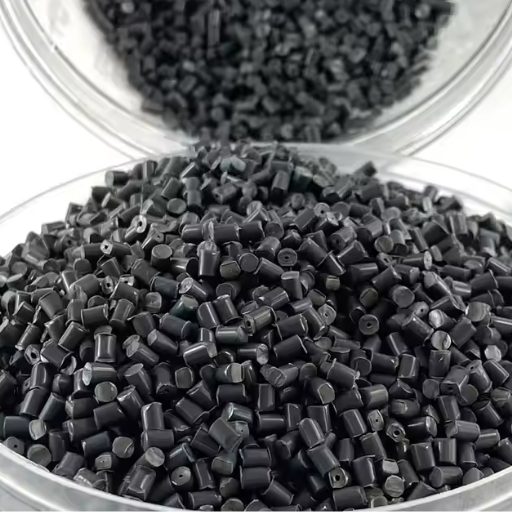
Considering grades and formulations, the softening temperature of PPO is between 210°C and 280 280°C. This broad gap represents the soft state where the material is no longer completely rigid. The aforementioned temperature limit is essential in both the scientific and practical aspects of manufacturing, as it enables the formation of thermoplastics through injection molding.
Defining Softening Temperature in Polymers
The softening temperature of a polymer is a crucial characteristic to consider when selecting materials for engineering and production processes. A wide range of molecular and environmental factors determines it. The most significant factors include the polymer’s molecular weight, the degree of cross-linking in its structure, and the type of additives or plasticizers used. Usually, a higher molecular weight translates to higher softening temperatures because of increased intermolecular forces. In contrast, cross-linking enhances the polymer network and improves thermal resistance. On the other hand, plasticizers lower softening temperatures by reducing interactions between the chains and increasing flexibility.
Measured softening points can be affected by environmental factors, such as the pressure during heating and the heating speed applied during the softening point assessment. ASTM D1525 measures the softening of the polymer for the Vicat softening point and establishes standards to maintain consistency across all tests, providing dependable data for manufacturing purposes. Such criteria enable precise material selection and optimization for industries such as automotive, electronics, and aerospace, where exceptional thermal control strengthens product durability and functionality.
Typical Temperature Range for PPO Softening
The unmodified PPO polymer has a softening point in the range of 200°C to 210°C, along with other desirable properties, such as thermal stability. It finds use in applications that require heat resistance. Furthermore, the accuracy of the softening range limits is crucial in high-temperature applications, such as those in the electrical, automotive, and fluid transfer industries. The presence of fillers, other polymers, and additives may alter the range mentioned above. Polystyrene blends and softening PPO fillers are cited examples. While this alteration may improve the mechanical strength of the material and its process capability, it also affects the thermal performance of the polymer.
Factors Affecting the Softening Temperature of PPO
The softening temperature of Polyphenylene Oxide (PPO) is associated with its molecular structure, additive formulation, and processing techniques. The molecular weight of PPO, in particular, influences the softening temperature because higher molecular weights result in enhanced deep intermolecular bonding and rigidity of the polymer chain, which makes softening at higher temperature levels. In addition, the presence of additives such as plasticizers, reinforcing agents, and stabilizers can significantly alter the range of softening points. For instance, plasticizers can lower the softening temperature due to increased mobility of the chains, whereas glass fiber reinforcement fillers enhance thermal resistance and bear mechanical strength.
The degree of crystallinity is also one of the determinants of the thermal behavior of PPO. The greater the polymer’s order, the more stable it is thermally, resulting in a higher softening point. Furthermore, operational parameters like hot cooling rate and mold temperature are highly influential on the thermal properties of PPO because they change its morphology, residual stress, and cooling rate stump. The addition of copolymers, such as styrene, may also play a crucial role by providing more flexibility, which alters thermal transitions based on the proportion and spatial arrangement of the substituents. These considerations need to be managed to properly formulate a PPO for precise industrial applications that require exact thermal and mechanical specifications.
How Does PPO Compare to Other Plastics?

Unlike other plastics, PPO provides a unique combination of thermal, mechanical, and dimensional stability. Its heat resistance is superior to that of polyethylene and polypropylene, thus making it suitable for high-temperature applications. PPO’s lower water absorption compared to many other engineering plastics helps it perform better in moist conditions. Regarding impact resistance, stiffness, and other mechanical properties, PPO is considered an inferior polymer because it uses blends of polystyrene to enhance processability and reduce costs for meeting different industrial requirements. Such attributes make PPO a preferred material for use in harsh environments, such as electric components, automobile parts, and even household appliances.
PPO vs. Polystyrene: A Comparison of Properties
PPO and polystyrene (PS) are separate polymers, each with unique material attributes that make them ideal for their respective applications. PPO has much higher thermal resistance than PS, having a deflection temperature of 180 to 210°C, while the latter has a range of 90-100°C. This allows ultrasonic plastic welding to be done without the risk of PS softening, providing reliable sealing.
Moreover, the chemical resistance of PPO is better than that of polystyrene, giving it an advantage in industrial and automotive applications for solvents, acids, and oils. From a mechanical standpoint, PPO has high tensile strength, impact resistance, and a supple nature, whereas polystyrene is brittle and can only endure limited mechanical stress. This makes polystyrene less suitable for structural components.
With its low molecular weight, polystyrene is cheaper and simpler to process due to its lower melting and molding temperatures, making it a more cost-effective option. However, these advantages strictly defeat performance metrics, especially in demanding applications requiring higher levels of strength, structural integrity, thermal stability, environmental resistance, or rest. This positions PPO as the material of choice for premier applications, whereas PS is often preferred in non-critical situations, such as disposable packaging or insulation materials.
High Heat Resistance in PPO Versus Other Thermoplastics
Through its distinctive molecular structure and glass transition temperature, which lies between 99 °C and 110°C, PPO surpasses many thermoplastic materials in terms of heat resistance. This makes it appropriate for use in thermal stability applications at high temperatures, such as in medical devices, electrical housings, and automotive parts. In contrast to thermoplastics like polyethylene (PE) and polypropylene (PP), which lose mechanical strength at relatively low temperatures, PPO exhibits structural deformation and softening. Also, PPO’s performance in harsher temperature conditions is enhanced by low coefficients of thermal expansion. PPO’s resistance to heat can also be modified by adding polystyrene or reinforcing it with glass fiber to meet industrial application needs while still controlling costs.
Applications of PPO Compared to Other Polymers
In comparison to other polymers, I consider the application of PPO, taking into account its thermal stability, mechanical strength, and chemical resistance. For example, in automotive engineering, PPO has an advantage over traditional polymers, such as polyamide, as it can withstand high temperatures and chemical degradation, outperforming other materials. Also, in electrical and electronic applications, PPO is an exceptional dielectric, which enables it to be used in insulating housings and connectors, serving these parts better than other polymers. Although ABS and PVC are lower in cost, these polymers do not serve the same purpose as PPO, which maintains its reliability, durability, and high performance over time.
What Are the Physical Properties of PPO?
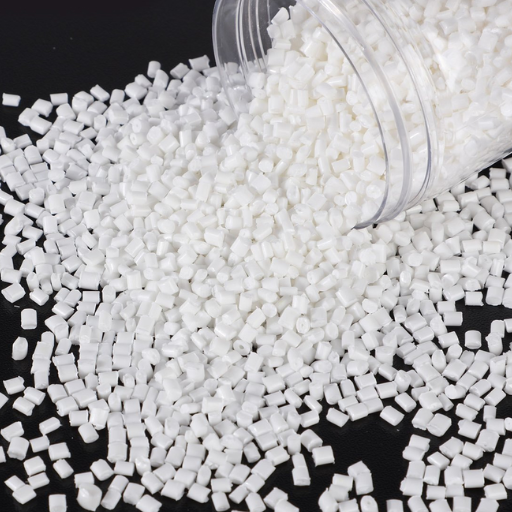
PPO (Polyphenylene Oxide) exhibits several distinct physical properties that make it highly valued in engineering applications:
- High Thermal Stability: PPO maintains its structural integrity at elevated temperatures, with a glass transition temperature of approximately 210°C.
- Dimensional Stability: It resists warping or deformation under mechanical stress or temperature changes.
- Low Moisture Absorption: PPO has excellent water resistance, ensuring minimal impact on its properties in humid environments.
- Strong Mechanical Properties: PPO demonstrates high tensile strength and stiffness, making it suitable for demanding applications.
- Electrical Insulation: It offers outstanding dielectric properties, ideal for electrical and electronic components.
These physical attributes make PPO an essential material for applications requiring durability, thermal resistance, and precision.
Thermal Properties: Glass Transition and Heat Distortion
PPO possesses strong thermal characteristics critical for functioning in high-temperature settings. This is due to PPO’s glass transition temperature (Tg) being roughly set at 210°C. The GPU phase is set in a glassy solid and can be transitioned to a rubbery morphous state at moderately higher temperatures. The g value illustrates the significant benefits of PPO in mechanical applications that use materials subjected to high heat demands.
Moreover, the heat distortion temperature value typically ranges from 170°C to 200°C, with variations correlating to the specific grade of the material, as well as the inclusion of any reinforcements or fillers. HDT defines the upper operational temperature of a material while still allowing the part to carry a load. This parameter measures the performance stance along with the geometry of the PPO material. Automotive and industrial machines use PPO if one looks at the industrial devices incorporated into tools designed to withstand heat exposure. The uncompromising response of these materials to cyclic heat manifests extreme stamina and durability in practical applications.
Electrical Properties of Polyphenylene Oxide
Polyphenylene Oxide is widely known for its remarkable dielectric properties, specifically its low dissipation factor and dielectric constant. PPO has become one of the preferred polymers for high-level electronic devices. Depending on the composition and frequency, PPO has a dielectric constant in the range of 2.6 to 3.0, thus PPO reduces transmission signal loss. SIMO PPO also helps provide better insulation. PPO maintains a low dissipation factor, usually below 0.001, at standard testing frequencies.
High volume resistivity in the range of 10^15 to 10^16 ohm·cm is another remarkable feature of Polyphenylene Oxide, ensuring a high degree of insulation under extreme conditions. These materials also preserve their electrical properties over a broad temperature range alongside fluctuations in humidity, giving them a high degree of reliability in extreme environments. These factors ensure the reliability of weak PPOs in high-precision circuitry and connectors, including components of electrical devices designed for high-speed signal transmission.
Dimensional Stability and Viscosity Characteristics
Polyphenylene oxide (PPO) has outstanding dimensional stability due to its low thermal expansion coefficient and resistance to creep deformation. This enables use in applications that require precise dimensional accuracy, even over long periods when subjected to thermal or mechanical loads. Moreover, its exceptional processing viscosity enables uniform molding and fabrication, resulting in impressive industrial production attributes.
How is the PPO Processed in Manufacturing?
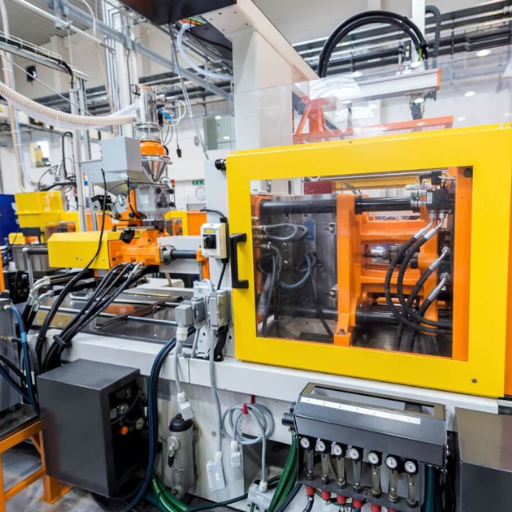
Techniques such as extrusion and injection molding are the primary methods used for the processing of PPO. During these processes, the raw materials are heated to melting temperatures before being placed into precision molds or dies, which shape them into the required form. The addition of modifiers, such as impact modifiers or flame retardants, is common in processing to improve the performance characteristics of the material. Careful control over temperature is necessary to prevent degradation and ensure optimal material flow, allowing for the consistent production of high-quality components when combined with industry-grade machining systems.
Injection Molding: Processing Temperature and Conditions
High-quality results with injection molding can only be obtained with precise control of temperature, environment, and other factors. As a professional, I believe the processing temperature should be adjusted based on the specific material used, ideally at its melting or glass transition point. With these considerations, setting stagewise heating of the barrels is essential to allow the polymer to melt and homogenize before injecting it into the extruder. Consistent mold temperatures must also be maintained to improve surface finish and reduce defects. Injection velocity and pressure must also be monitored closely to avoid warping issues or incomplete fills. I believe that rigid control of these factors enables the smooth execution of injection molding and produces quality molded parts.
Molding Techniques for Polyphenylene Oxide
During the processing of polyphenylene oxide, I pay special attention to high temperatures and particular processing parameters due to the material’s thermal stability and low moisture retention. The barrel temperatures must be maintained between 500°F and 600°F, while the mold temperatures must be tuned to approximately 200°F to 275°F to ensure complete filling of the mold. Furthermore, I account for the thermoplastic viscosity, which increases with temperature, by using higher injection pressures to maintain a streamlined flow, ensuring that the part’s features achieve the requisite accuracy while preventing sink marks or voids.
Creating PPO Blends for Enhanced Performance
When trying to improve performance with PPO blends, I focus on modifying material properties to meet the requirements of a specific application. The blending of polystyrene, polyamide, or high-impact styrene polymers with PPO yields a blend with reasonably high thermal stability, mechanical strength, and improved processability. Furthermore, specific modifiers of impact, flame, and even UV stabilizers are added with further advanced materials to increase overall attributes, making them even more challenging. The use of a stern formulation alongside carefully controlled processes ensures that the resulting blends can withstand the rigors of industrial processes.
What Applications Utilize PPO?
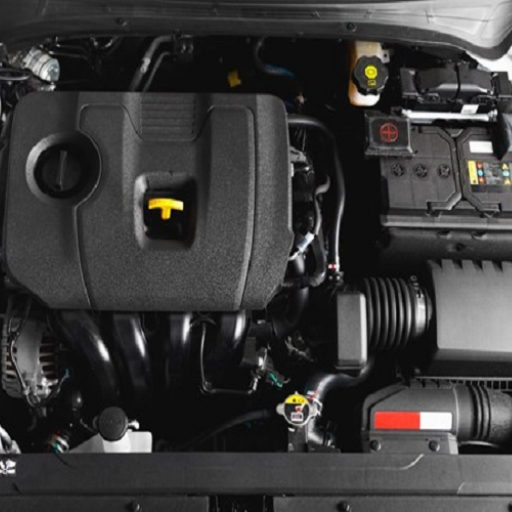
Due to mechanical strength, thermal stability, and electrical insulation properties, PPO (polyphenylene oxide) is applicable in various industries. Its heat and durability make it suitable for automotive components, such as electrical connectors and pump housings. It is also used for circuit boards, which are part of electrical and electronic devices, due to their need for proper insulation. Moreover, PPO is used in some medical devices and industrial equipment due to its chemical resistance and dimensional stability. These applications demonstrate how versatile PPO is in meeting the strict performance standards required by various industries.
Common Uses of Polyphenylene Oxide in Industry
As a polyphenylene oxide, PPO is blended with different polymers to increase its properties. This utilizes under-the-hood components in automotive manufacturing, which require fuel system components and air intake manifolds to possess excellent thermal resistance and dimensional stability. Additionally, the lightweight yet durable characteristic of PPO serves best for electrical housings, especially in challenging environmental conditions, due to its long-term reliability. It also enables low creep under stress and excellent moisture resistance.
The telecommunications sector takes advantage of PPO’s high dielectric strength as well as its exceptional dielectric and insulating properties. It is employed in electrical appliances such as connectors, relay housings, and antenna mounts, where electrical insulation and low signal loss are critical. In addition, its resistance to hydrolysis makes it appropriate for use in outdoor telecommunications equipment designed for varying climatic conditions.
PPO’s contribution to sustainable initiatives is increasing, especially for projects focused on reducing material and energy consumption. For example, incorporating PPO in water filtration systems takes advantage of its chemical resistance and structural strength. Likewise, new developments in blend materials of PPE and PPO allow for the production of recyclable materials that meet the growing demand for eco-friendly engineering solutions.
Innovative Applications in Nanocomposites
Nanocomposites are an emerging area in materials science, as they are expected to benefit many industries due to their unparalleled strength, thermal, and electrical properties. Recent progress in nanocomposite technology has led to the expansion of nanocomposite applications into aerospace, automotive, and even renewable energy sectors. For instance, adding carbon nanotubes to polymer matrices improves the polymer’s mechanical strength and electrical conductivity, which are crucial for aerospace engineering. A similar attempt is being made using graphene-based nanocomposites to enhance the efficacy of batteries and energy storage devices, thereby supporting sustainable energy solutions.
In medicine, drug delivery systems and implant materials are being metamorphosed by nanocomposites. The materials offer targeted solutions for patient care, featuring controlled drug release and enhanced biocompatibility, which minimizes side effects and improves therapeutic outcomes. Furthermore, modern manufacturing processes, including 3D printing, enable intricate designs using nanomaterials, providing a wider range of customizable geometries for specialized applications.
In addition, the use of nanocomposites in environmental applications is receiving special attention, particularly in the remediation of pollutants and the construction of sophisticated water treatment facilities. The addition of nanoclay or functionalized nanoparticles to these systems results in greater molecular-level contaminant absorption and filtration. Taken together, all these developments highlight the outstanding technological innovations and versatility of nanocomposites in tackling contemporary issues as well as their sustainability goals for the future.
Role of PPO in Electrical and Electronic Applications
Due to its unparalleled thermal stability, low water absorption, and strong dielectric characteristics, Polyphenylene Oxide (PPO) is considered a high-grade thermoplastic and wiring component. PPO serves as a flame-retardant and versatile part in high-temperature environments that could face shifting thermal conditions.
PPO’s thermal degradation resistance, alongside its low water absorption, enables it to serve in the creation of appliances that require a reliable, sturdy material for electrical parts, such as insulators, connectors, and casings. Also, the PPO blends with polymerized styrene (HIPS) or parts of nylon help maintain high mechanical performance while improving cost efficiency and processability. The most recent advancements feature retaining Performance Grade Materials (PGM) in compacted spaces for gold or silver key applications in miniature devices, suitable for harsh operational conditions.
These aspects position the PPO as a material with desirable properties for developing durable, efficient, and safe electrical systems, which adhere to strict industry technical norms and regulatory standards.
What Are the Advantages of Using PPO?
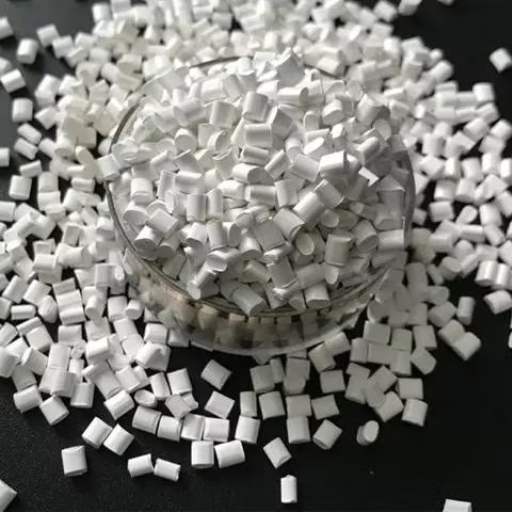
The preference for PPO as a material in several applications can be attributed to its specific properties. One of its main advantages is its resistance to chemicals and heat. This ensures its durability in harsh environments. From the perspective of electronics and electrical systems, its excellent insulating properties add to its vitality by further reducing the possibility of failures or malfunctions compared to other materials. PPO is relatively lightweight while maintaining dimensional stability over time in terms of performance. Its outperforming traits do not end there. PPO possesess does tend to be flame-retardant. This adds safety while maintaining compliance with required industry standards and regulations. Considering all these features, PPO can be deemed a reliable and versatile material for several industries.
Benefits of High Glass Transition Temperature in PPO
Rinsing the dust off a few advanced polyphenylene oxide (PPO) samples demonstrates a high glass transition temperature (Tg) coupled with extremely low-demand applications. Along with critically needed advantages, the glass-like state of polyphenylene implements a highly measurable domain with maintained strength. Mechanically, this range exerts set limits on the required temperature range, resulting in stable dimensions. Due to these factors, PPO is well-suited for regions with extreme thermal exposure, such as automotive engines and components, as well as military and aerospace machinery. These materials are expected to withstand extreme heat for prolonged periods without deforming or losing their structural integrity.
Moreover, the elevated transition glass temperature (Tg) of PPO has diademed electrical insulation properties because it averts overheating that would otherwise damage dielectric integrity and functionality in electronic systems. For high-precision applications, such as medical devices or industrial-grade equipment, thermal stability ensures reliable performance during temperature fluctuations, thereby bolstering the reliability and durability of the parts. From the standpoint of other material characteristics, such as flame resistance and chemical attack tolerance, the high glass transition temperature makes PPO withstand the test of high-performance engineering.
Chemical Resistance and Low Water Absorption
Polyphenylene oxide (PPO) is best known for its use in environments that are aggressive and exposed to harsh chemicals, such as acids, organic solvents, and even alkalis, due to its exceptional chemical resistance. The resistance is due to the polymer’s molecular structure, which is stable enough to mitigate degradation, allowing for long-term performance in aggressive conditions. PPO’s water absorption rate is exceptionally low, under .1%, further adding to its stability and mitigating the risks for mechanical deterioration in humid environments or warping. The above traits mean that PPO can withstand moisture while still being resistant to chemicals, making it ideal for chemical systems, underwater systems, and those where operational integrity is essential. This makes PPO a crucial material.
Comparative Advantages Over Other Engineering Plastics
Polyphenylene Oxide (PPO) is like other engineering plastics, with high strength and thermal stability, but also has low moisture absorption. Polyamide (nylon), a type of polyamide, undergoes measurable dimensional changes due to significant water absorption, while PPO maintains its precision and integrity. This provides an advantage in industries such as automotive and aerospace components, where high-humidity environments are the norm, enabling greater tolerances.
PPO also outperforms many other plastics, including ABS (Acrylonitrile-Butadiene-Styrene), when considering thermal resistance. While ABS has low-temperature softening characteristics, PPO maintains its distinct usability at high-performance conditions, enhancing its utility in applications subject to intense heat fluctuations, such as electrical enclosure housings. Moreover, the material’s flame resistance and resistance to most acids and bases give greater value over polycarbonate when chemicals and safety constraints necessitate more stringent policies.
Economically, PPO holds an advantage as it balances performance and cost. Unlike PEEK or PPS, where spending increases dramatically due to the high value of these polymers, PPO provides an accessible solution that does not compromise essential mechanical and environmental durability factors, positioning it as a versatile and cost-effective alternative in engineering plastics. Additionally, the equal raw, thermal, and chemical resistance of these polymers improves their perceived value as materials for various applications.
Reference Sources
-
Preparation and Properties of PA10T/PPO Blends Compatibilized with SEBS-g-MAH
- Key Findings: This study highlights PPO’s high glass transition temperature and its role in enhancing the thermal and dielectric properties of PA10T/PPO blends. The glass transition temperature of PPO was noted to influence the blend’s mechanical and thermal behavior.
- Methodology: The research involved melt blending PA10T and PPO with a compatibilizer, followed by analysis of thermal and mechanical properties using DSC and DMA.
-
Effect of the Flame Retardants and Glass Fiber on the Polyamide 66/Polyphenylene Oxide Composites
- Key Findings: The study examined the thermal properties of PA66/PPO composites, noting that the addition of flame retardants slightly lowered the melting temperature of the composites. PPO’s inherent thermal stability contributed to the composite’s performance.
- Methodology: The composites were prepared using extrusion and injection molding, and their thermal properties were analyzed using differential scanning calorimetry (DSC) and thermogravimetric analysis (TGA).
-
- Key Findings: While this study primarily focused on polypropylene blends, it referenced PPO’s thermal properties in the context of its use in structural foams. PPO’s high thermal stability was noted as a key factor in its application.
- Methodology: The research involved injection molding and thermal analysis to study the impact of processing conditions on material properties.
- Top PPO Plastic Pellets Suppliers in China
Frequently Asked Questions
Q: What is the glass transition temperature of polyphenylene oxide plastic (PPO)?
A: The glass transition temperature of polyphenylene oxide plastic (PPO) is typically around 210 degrees Celsius. This temperature indicates the point at which the amorphous regions of the polymeric materials begin to soften.
Q: How does PPO compare to other engineering plastics in terms of thermal stability?
A: PPO has excellent thermal stability compared to many other engineering plastics. It can maintain its mechanical properties and resist deformation at high temperatures, making it suitable for applications in automotive and electronic components.
Q: What is the heat distortion temperature of PPO?
A: The heat distortion temperature of polyphenylene oxide is generally around 95 degrees Celsius, which refers to the temperature at which the molded part begins to deform under a specified load.
Q: Can PPO be blended with other polymers?
A: Yes, PPO can be blended with other polymers, such as polyamide and styrenic copolymers, to enhance its properties. These blends of PPO may improve characteristics like impact resistance and low moisture absorption.
Q: What are the electrical properties of unmodified PPO?
A: Unmodified PPO exhibits excellent electrical properties over a wide range of frequencies, with a high dielectric strength and low moisture absorption, making it suitable for electrical and electronic applications.
Q: What are some typical applications of polyphenylene oxide plastic?
A: PPO is commonly used in applications requiring high thermal stability, such as in automotive components, electrical connectors, and various molded parts, due to its superior mechanical properties and low moisture absorption rate.
Q: What is the significance of molecular weight in PPO?
A: The molecular weight of PPO affects its mechanical properties and melt viscosity. Higher molecular weight PPO typically exhibits improved strength and thermal resistance, but may also be more challenging to process.
Q: How does the presence of glass fiber affect PPO’s properties?
A: The addition of glass fiber to PPO can significantly enhance its mechanical properties, including tensile strength and rigidity, while also improving thermal stability. This makes glass-reinforced PPO suitable for high-performance applications.
Q: What challenges are associated with processing PPO?
A: Processing PPO can be difficult due to its high melt viscosity and tendency to degrade if not processed under optimal conditions. Precise temperature control and equipment capable of handling high-viscosity materials are essential for successful molding.
Q: What does differential scanning calorimetry reveal about PPO?
Differential scanning calorimetry (DSC) can be used to analyze the thermal transitions of PPO, including its glass transition and melting behavior, providing valuable insights into its thermal properties and crystallization behavior in polymeric materials.

